#Biotechnologies
Text

Critical Thinking Skills
.
I help researchers increase engagement with their work. Together we will transform your ideas into unique and intuitive graphics with my reliable process:
1-Pinpoint your goals
2-Sketch and prototype
3-Discuss and iterate
4-Goal accomplished
.
𝐇𝐈𝐑𝐄 𝐌𝐄 (DM Your Projects)
.
💎Here to HELP You:
✔️Graphical Abstract Design
✔️Journal Figures Design
✔️Scientific Illustration
✔️Flyer and Poster Design
✔️Infographic Design
✔️Slides Design
#critical thinking#critical#skills#biochemistry#biotechnology science#biotech#biodiversity#biology#bioinformatics#biotechnology#biotechnologies#graphic design#graphics#science illustration#scientific illustration#illustrations#commisions open#open commissions#commission
30 notes
·
View notes
Video
undefined
tumblr
Ukraine
Biotechnologies hard at work in shaping the future today!
#ukraine#biology#biolabs#biotechnologies#evolution#metamorphosis#the future#the future today#f-15#war#world at war#weapons#peace#peace for all#peace for ukraine
14 notes
·
View notes
Text
Today, 🗽 The White House Office of Science and Technology Policy (#OSTP) is releasing an updated list of #critical and #emerging #technologies 🛰️🚀 (#CETs) that are potentially significant to U.S. national #security 👮.
--> The critical and emerging technology areas in the 2024 update are:
• Advanced Computing
• Advanced Engineering Materials
• Advanced Gas Turbine Engine Technologies
• Advanced and Networked Sensing and Signature Management
• Advanced Manufacturing
• Artificial Intelligence
• Biotechnologies
• Clean Energy Generation and Storage
• Data Privacy, Data Security, and Cybersecurity Technologies
• Directed Energy
• Highly Automated, Autonomous, and Uncrewed Systems, and Robotics
• Human-Machine Interfaces
• Hypersonics
• Integrated Communication and Networking Technologies
• Positioning, Navigation, and Timing Technologies
• Quantum Information and Enabling Technologies
• Semiconductors and Microelectronics
• Space Technologies and Systems
Click here for more: https://lnkd.in/dMfb3kdf
#digitaltrasformation#digitalera#criticaltechnologies#emergingtechnologies#Semiconductor#Microelectronics#SpaceTechnologies#HumanMachineInterfaces#CleanEnergy#supercomputing#quantumcomputing#Hypersonics#Biotechnologies#AdvancedMaterials#Robotics#CommercialExcellenceBulletin
0 notes
Link
The researchers from Adverum Biotechnologies. (Redwood City, CA) have developed a method for generating eukaryotic cell libraries for screening mutant AAV capsid proteins. Delivering therapeutic drugs via viral vectors is a potential strategy for treating and preventing various human diseases and genetic disorders. Since wild-type AAVs are nonpathogenic and have no etiologic relationship with any known disorders, recombinant vectors based on it are recognized to have great clinical safety. In human clinical trials, AAVs have demonstrated great promise. However, cell tropism (the capacity for viruses to enter and infect cells) and neutralizing antibody (NAb) reactions are the challenges for AAV-based gene therapy. Future studies will require better screening technologies as well as effective anti-immune therapy.

0 notes
Text

CRISPR was already on thin fucking ice as a serious name for a biotech technique and now they made up CRISPY-BRED are you joking
4K notes
·
View notes
Text
Leiden Ph.D. candidate Jo-Anne Verschoor discovered that nearly 20% of the bacterial strains she studied could degrade plastic, though they needed some encouragement to do so. "Bacteria are just like people," says Verschoor. Her research was published in the journal Communications Biology.
Some of the world's smallest organisms could play a significant role in solving the problem of plastic pollution. Increasingly, it is being discovered how certain bacteria can break down plastic into small particles, which can then be recycled.
Moreover, Verschoor's research reveals that many more bacteria than previously thought can degrade certain types of plastics. The 27-year-old Leiden microbiologist was able to use a large collection of Streptomyces bacteria, which were already available at the university as scientists use them in the search for new antibiotics.
Continue Reading.
428 notes
·
View notes
Text

Reminder: you can't kill them in any way that matters.
259 notes
·
View notes
Text
Utik
The utik (yoo-tik) are a sophont species the rakii came in contact with when they first landed on Tkrin, their second largest moon orbiting Rek. The utik were actually the first to even set foot onto it, as they had no other choice. After suffering massive damage to their ship, the utik were forced to land on the lunar surface and hope to survive or await help.
Years later, the rakii show up, which started an a long, chaotic process of attempt of communication and debating ownership.


The bodies of the utik are actually not their true bodies. The actual sophont lies within the pearly cased cockpit. Utik like the Olac bio-mechs, mastered the technical art of bio-technology, having started on a very hot and humid planet. While unlike the Olac who switched to bio-technology as a means to evade a debilitating disease, the utik mastered it for years, working off various symbiotic organisms.
Their mech suits, or cyborg bodies you could say are symbiotic, as after their nervous and circulatory systems are linked, the pilot has full control of the suit, having it feed off waste material from the pilot. The suit then takes the waste, replenishes it, mixes it's own formula into it and feeds it back to the pilot. Like a plant, it gets a lot of energy off light and other forms of UV Retaining it for hours. These suits are suitable (ha) for open space, and lunar terran for a limited time. However proper measures are made to keep the suits tidy from "space dust" so no one goes out "naked" and risk exterior damage.
(quick sketch of utik 'pooters n screens. NOT ENTIRELY FINALIZED)
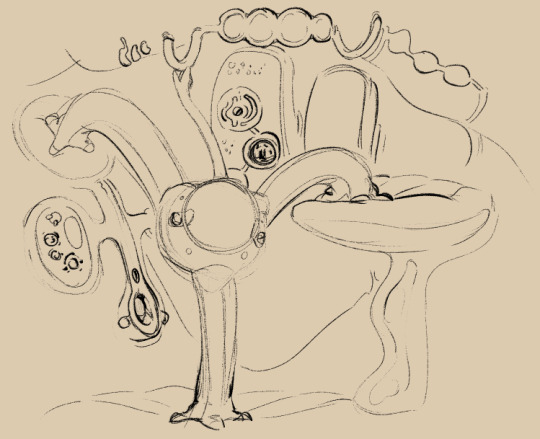
However, this isn't their true form. At least they didn't start off like this.
Way before, after they reached the ultimate feat in their development, their star was noticeably suffering, as it was predicted to eventually turn into black hole. While they had years 'till then, there wasn't enough time to perfect their original forms for the long-term space travel. So. as best they could, they learned to carefully strip and reduce themselves to nothing more than squishy muscle and brain matter, beforehand creating living space suits and sleeper pods to maintain what's left.
Several ships shot into space just in time before their star went dark and each ship jumped in different directions hoping to find and terraform a new world.
This group of utik weren't so lucky, as said before.
Now for the first half of the year, rakii and utik were on some tense terms. A lot of internal debates on who gets the moon. While utik were capable of defense, they weren't in a great position to, and the rakii weren't sure how to proceed with their first extraterrestrial contact. (Non-religious turned contact I'd guess???) UNTIL, one day it was brought ahead that, the utik secrete an anti-radiation slime. Something they came with naturally, just cranked to 10.

At first, the rakii thought to use this fluid as an applicable substance similar to sun-block, required to apply pre-spaceflight. However, it was revealed that they are extremely allergic to it. So skin-contact was a big no.
(Unfortunate rakii subject applying utik-based lotion. Results: swelling in skin, which can further cause blisters and splits)


After several trials, they came to a conclusion of using it as a gel layering in space suits, capable of absorbing radiation and protecting the wearer.
This discovery brought up a plan and a deal. It was agreed, rakii and utik would share the moon, making their first ever alliance, in exchange the utik would allow the rakii to harvest this anti-radiation goop off them, of course while exchanging knowledge, and resources.
492 notes
·
View notes
Text
I hate that in the popular vision of biopunk, "biological machines" and biotech look like gross body horror nonsensical pieces of crap with no rhyme or reason
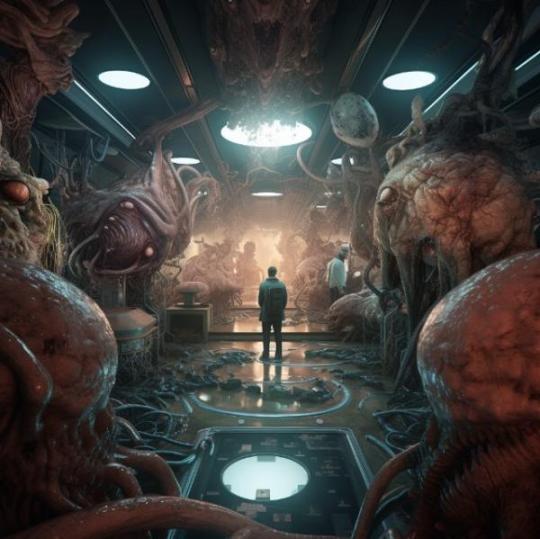
(bioforges from Orion's Arm)
When the most efficient "biomachines" we know, able to turn mere air water and sunlight into all sorts of useful products, look like this:

#cosas mias#biopunk#science fiction#I hate that biopunk in the general science fiction conscioness is all about gross body horror#and not the potential of biotechnology to change our daily lives#worldbuilding#body horror tw
318 notes
·
View notes
Text
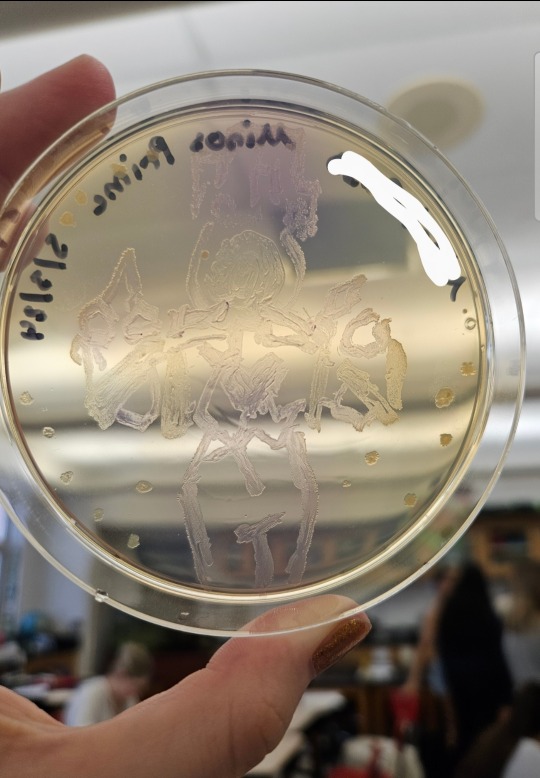
made minos prime out of gmo e. coli
#ultrakill#minos prime#ultrakill minos#biotechnology#bioengineering#i was gifted with the science autism#and i use it for fanart
113 notes
·
View notes
Text

Learning Tips for Students
.
I help researchers increase engagement with their work. Together we will transform your ideas into unique and intuitive graphics with my reliable process:
1-Pinpoint your goals
2-Sketch and prototype
3-Discuss and iterate
4-Goal accomplished
.
𝐇𝐈𝐑𝐄 𝐌𝐄 (DM Your Projects)
.
💎Here to HELP You:
✔️Graphical Abstract Design
✔️Journal Figures Design
✔️Scientific Illustration
✔️Flyer and Poster Design
✔️Infographic Design
✔️Slides Design
#learning#tips#brainstorming#notes#self testing#biochemistry#biotechnology science#biotech#biology#bioinformatics#biotechnology#biodiversity#biotechnologies#graphic design#graphics#science illustration#scientific illustration#illustrations#open commissions#commisions open#commission#taking commisions
14 notes
·
View notes
Text



And we're back with : Immunology at library
#studyblr#sparkle studies#study blog#studycare#studyspiration#desi studyblr#self care#study motivation#studyspo#photography#study inspiration#study hard#studying#study with me#studyblr community#study aesthetic#college student#student#student life#my stuff#university student#library#books and libraries#stemblr#women in stem#stem academia#stem student#immunology#biotechnology#libraries
52 notes
·
View notes
Text
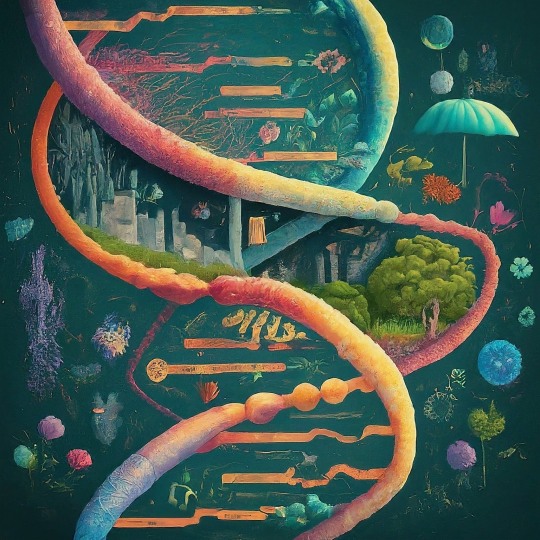
Epigenetics: A Journey Through Inheritance Beyond Genes
For centuries, scientists have been fascinated by the mysteries of heredity and how traits are passed down from generation to generation. DNA, the molecule that stores our genetic code, was once thought to be the sole determinant of our characteristics. However, a new frontier in biology, revealing a captivating layer of complexity beyond the DNA sequence itself: Epigenetics.
What is Epigenetics?
The term "epigenetics" was first coined in the 1940s by British biologist Conrad Waddington, but it wasn't until the late 20th century that its significance truly blossomed. Epigenetics, literally meaning "above genetics," refers to the study of heritable changes in gene expression that occur without alterations to the DNA sequence itself. Imagine DNA as the musical score, but epigenetics are the conductor and musicians who determine how the music is played. Through chemical modifications and adjustments to the proteins around DNA, epigenetics dictates which genes are turned on or off, influencing how cells function and ultimately shaping our health, development, and even behavior. Think of your DNA as the hardware: it contains the basic instructions for building and running your body. But epigenetics acts like the software, fine-tuning those instructions and determining which genes get turned on or off at specific times and in specific cells. These modifications, like chemical tags or changes in the packaging of DNA, don't alter the underlying code itself, but they can have a profound impact on how it's read and interpreted.
The Key Players:
DNA methylation: This process involves adding a methyl group to DNA, essentially silencing the gene it's attached to. Imagine it like putting a dimmer switch on a light bulb.
Histone modifications: Histones are proteins that package DNA, and changes in their structure can make genes more or less accessible to the cellular machinery needed for expression. Think of it like adjusting the curtains around a window - open wide for full light, slightly closed for filtered light.
Non-coding RNAs: These are molecules that don't code for proteins but can regulate gene expression in various ways. They're like the backstage crew in a play, ensuring everything runs smoothly.
The Power of Epigenetic Regulation
Epigenetic regulation plays a crucial role in various biological processes, including:
Development: During embryonic development, different cell types emerge from the same DNA blueprint by activating or silencing specific gene sets through epigenetic modifications.
Cellular differentiation: Specialized cells like muscle or nerve cells have unique functions due to differences in their active genes, controlled by epigenetic mechanisms.
Learning and memory: Epigenetic changes in brain cells are thought to be essential for learning and forming memories.
Aging: As we age, our epigenome accumulates changes that can contribute to age-related decline and disease.
Environmental influences: Diet, exercise, stress, and exposure to toxins can leave epigenetic marks on our genes, potentially impacting our health and even the health of future generations.
Epigenetics reminds us that we are not simply products of our genes. Our environment, choices, and experiences leave their mark, shaping who we are and potentially influencing our children's health. This deeper understanding of ourselves opens doors for self-awareness, empowerment, and potentially reshaping our narratives – not just as individuals, but as a species with the potential to leave a healthier legacy for generations to come.
#life science#biology#science sculpt#molecular biology#biotechnology#epigenetics#daily dose of science#dna#genetic inheritance#genetics#decoding dna#genetic code#science#double helix
118 notes
·
View notes
Text
for someone who loves computers and wishes i could be one i sure do fucking suck at math
149 notes
·
View notes
Text
After 4 years of work, I've finally published my very first peer-reviewed theory paper: Design rules for controlling active topological defects
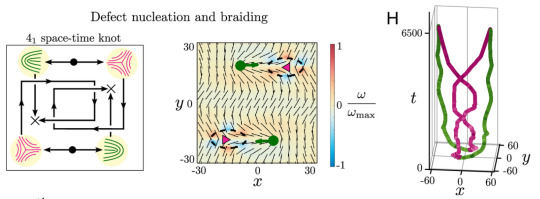
(and it's open access! :D)
I am sooo excited to finally be able to share this! I'll probably write some more in the future about what it was like to work on this project, but for now here's what I want to say about it:
I think this work is a beautiful example of how the long, meandering paths of curiosity-driven research can bring us in completely unexpected directions, yielding new ideas and technologies that might never have been found by problem- or profit-driven research.
We started this project because we were interested in the fundamental physics of active topological defects; we wanted to understand and develop a theory to explain their effective properties, interactions, and collective behaviors when they're hosted by a material whose activity is not constant throughout space and time.
Along the way, we accidentally stumbled into a completely new technique for controlling the flow of active 2D nematic fluids, by using symmetry principles to design activity patterns that can induce self-propulsion or rotation of defect cores. This ended up being such a big deal that we made it the focus of the paper, for a few reasons:
Topological defects represent a natural way to have discrete information in a continuous medium, so if we wanted to make a soft material capable of doing logical operations like a computer, controlling active defects might be a really good way of putting that together.
There have also been a number of biological systems that have been shown to have the symmetries of active nematics, with experiments showing that topological defects might play important roles in biological processes, like morphogenesis or cell extrusion in epithelia. If we could control these defects, we'd have unprecedented control over the biological processes themselves.
Right now the technique has only been demonstrated in simulations, but there are a number of experimental groups who are working on the kinds of materials that we might be able to try this in, so hopefully I'll get to see experimental verification someday soon!
#physics#soft matter#materials science#science#academia#mathematics#topology#biology#biotechnology#tech#publishing#196
66 notes
·
View notes
Text
The newly developed lymph node—a sac filled with immune system components—is implanted under the skin. It is designed to act like a learning hub and stimulator to teach immune system T cells to recognize and kill cancer cells.
Lymph nodes—tiny glands throughout the body, mainly in the neck, armpits, and groin—are part of the immune systems of mammals, including mice and people. They number in the hundreds so that immune cells in one area of the body don’t have to travel far to alert the immune system to impending danger.
“They are a landing spot where T cells, the immune system’s fighting cells, lay dormant, waiting to be activated to fight infections or other abnormal cells,” says Natalie Livingston, currently a postdoctoral researcher at Massachusetts General Hospital and first author of the study published in the journal Advanced Materials.
Continue Reading.
291 notes
·
View notes